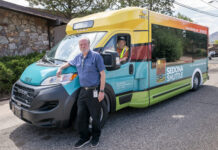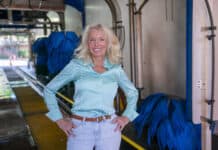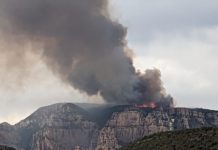With the 2016 election season in full swing, those vying for seats on the Sedona City Council were asked a variety of questions pertaining to issues facing the city — both today and in the future.
Q: What made you decide to run for City Council?
My wife and I treasure red rock country. To us, Sedona is the most special place on Earth. We recognize that this kind of beauty is fragile and vulnerable, and we’ve become protective.
I valued the opportunity to serve on the city’s Planning & Zoning Commission, but I found that P&Z’s primary role is to make recommendations. Council makes the important decisions, and it can and does overrule P&Z. I have come to realize that in order to make a difference in policy, I need to be on City Council.
I believe that my life experience has prepared me for serving on City Council. With a background in law and tax planning for small businesses, I have an inherent understanding of complex issues and financial data. I relish what can be laborious to others. Having drafted and reviewed many documents in my lifetime, I understand the fine print. I know how to analyze without over-analyzing. We need a change on City Council, and I believe that my skills and experience could be instrumental in bringing about that change.
Q: What specific ideas do you have to address the traffic issue?
The traffic issue may well be Sedona’s biggest challenge because of its complexity. I believe we can solve this problem, but I do not think there is any single solution. I have studied various approaches that have been proposed, including the 16 ideas that were laid out in the Sedona Red Rock News last November, and I think many of them may be feasible and deserve further attention. Once the current $250,000 traffic study is completed, I would absorb every detail. It must not be allowed to join past studies on a shelf at city hall. I sense urgency about our traffic dilemma.
Because gridlock has become so serious during peak periods, our list of possible solutions must include the creation of one or more alternate routes outside our city limits. This will require leadership and diplomacy in bringing the city, the counties, the Village of Oak Creek, Arizona Department of Transportation and the U.S. Forest Service to the table to discuss solutions and funding. I would welcome the opportunity to serve in that effort. A lot of hard work will be required to resolve this weighty matter, but I have never been daunted by hard work.
Q: Often, the vocal minority is the loudest voice when it comes to a topic in the city. How do you balance not only their concerns but the remaining majority of the community as well?
You balance the concerns of both by listening. Sometimes the voice we hear is loud, and sometimes it is a small, quivering voice apologizing for not being accustomed to public speaking. That voice is often speaking for friends and neighbors who believe their own efforts would be futile. The number of people who take the time to attend and speak at a City Council meeting is always small compared to the size of the voting population. Part of the challenge for council is to determine whether what is being called the “vocal minority” actually represents a majority view. If it does, council should give it considerable weight in determining what is best for Sedona. We need City Council members who will place more importance on listening to the people. I am listening with great interest — to those inside and outside of city council meetings.
Q: What do you see as the top issues facing Sedona these days and why?
The top issues are traffic, trash and fiscal responsibility. Of most importance to me is traffic, since the current trends threaten our quality of life and our tourism industry. I have dealt with the traffic issue above, and I will discuss trash and fiscal responsibility in my essay on Page 5A in today’s NEWS.
More broadly, I’m very concerned about the sense of frustration that seems to be sweeping across our neighborhoods. There are many who say our city leaders do not care what they think, so why should they bother investing themselves in hope for a better future? Their negativity is pervasive. I want to turn that mindset around. I want to prove to them that what they think matters.
Q: The city owns 200 acres across from the wastewater treatment plant on State Route 89A. How would you like to see that land used?
A starting point for making that decision should be the 2015 report of the Dells Land Use Group. I agree with the majority recommendation that the portion closest to the highway be kept natural or rural to preserve the view. Some of the report’s other recommendations, such as vineyards with a winery and tasting room, could make sense since there is an existing supply of water suitable for irrigation from the wastewater plant.



















